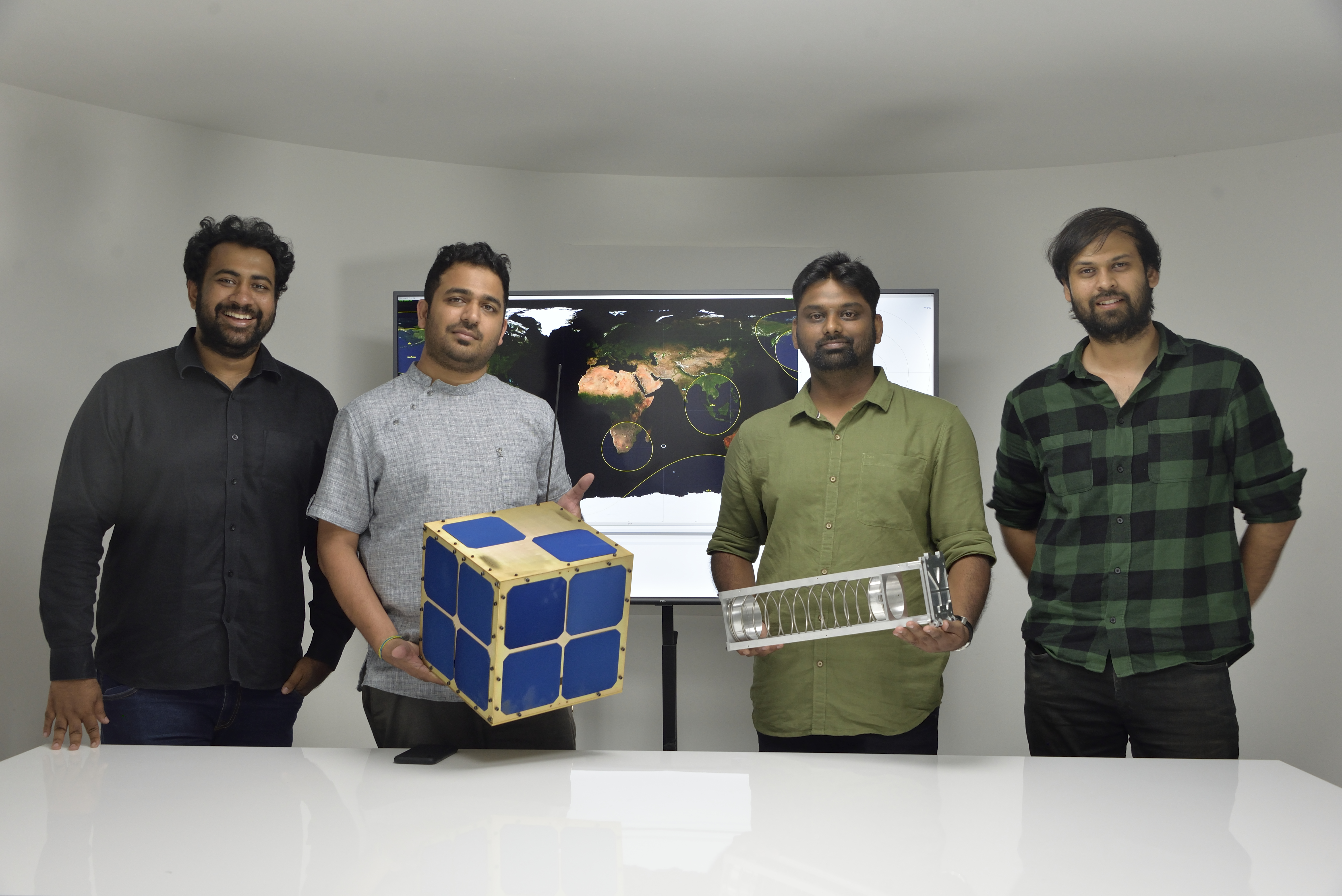Nearly a decade ago, Sanjay Nekkanti, then an engineering student at SRM University in the south Indian city of Chennai, was in rapt attention listening to a guest lecture by a scientist from the Indian Space Research Organization. The speaker said that even students can build small, functional satellites. The young Nekkanti took the idea to heart and set to work.
Nekkanti and a few of his college friends designed and assembled SRMSAT—India’s first student-built nanosatellite. It weighed a little over 10 kilograms.
However, that was just the first step. Nekkanti was far from satisfied. He wanted to build India’s first private space-tech company.
After graduating from SRM University with a bachelors degree in electronics and telecommunication engineering in June 2010, Nekkanti pursued his master’s studies at the European Union’s Erasmus Mundus Space Master program. He traveled to Germany and Sweden, and learned about different domains of space technology, including satellites and space instruments.
Nekkanti returned to India in 2012 to start a space tech startup. He knew that satellites could be built for much lower cost in India than in the West, but his firm, Dhruva Space, India’s first private space company, would go further by launching them into orbit.
“For USD 250,000, you could build a really good small satellite in India which could be of use to a small nation, whereas building a similar satellite in the US or Europe would cost USD 970,000,” said Nekkanti, founder and CEO of Dhruva Space.
Chasing a comet
In late 2013, people around the world were eagerly waiting to see Comet ISON—touted as the “comet of the century”—fly by our planet.
Traveling at 320 kilometers per second towards the sun, the bright ball of frozen matter was on a course that would take it behind our galaxy’s star and graze Earth’s atmosphere on November 28, 2013. Astronomers expected it to be brighter than a full moon and visible to the naked eye at nighttime throughout the month of December 2013.
On behalf of Indian Institute of Astrophysics, Dhruva Space was studying Comet ISON. The company deployed a high-altitude balloon that would operate at 30 to 40 kilometers above Earth’s surface.
However, in a remarkable turn of events, Comet ISON broke up before it got close to the sun. It was torn apart by the star’s immense gravity, disappointing thousands of astronomers and stargazers around the world.
As that happened, Dhruva Space lost communications with its balloon after it reached 18 kilometers altitude, and the company was unable to pinpoint its location. As it turned out, the balloon had drifted off course by 50 nautical miles, and was retrieved by a group of fisherman. One of them removed the SIM card embedded in the balloon’s payload, and placed it into his own mobile phone. When Nekkanti dialed the SIM’s number, he answered, and Dhruva managed to track him down and recover part of the payload.
A tumultuous journey
From 2014 to 2015, Nekkanti and his team struggled to find customers and it was becoming difficult to run the company without any funding. “Since the market had not matured and not much was known about space startups in 2014, investors did not bet on us,” Nekkanti said.
In 2015, the cash-strapped startup went into hibernation mode and suspended its day-to-day activities. Nekkanti even started engaging other companies to see if they might want to acquire Dhruva.
But a few friends that Nekkanti had known for a decade offered an alternative. Together, they started a sensor technology company called Thybolt, which was later folded into Dhruva Space. Thybolt offers sensor solutions in different sectors, including shipping, aviation, agriculture, aquaculture, and defense. Cash flow from Thybolt reinvigorated Dhruva Space.
“We realized that finding customers for sensor and connectivity solutions were relatively easier than finding immediate customers for building small satellites,” Nekkanti said.
In 2018, Dhruva Space pivoted to consult other companies and organizations, seeking ways to improve their satellite missions that have applications in fields like agriculture and mining. They also have satellites that assist in disaster management and scientific research related to the moon and Mars.
“Our flagship product is a ten-kilogram multi-payload nanosatellite platform which is application-agnostic and generates enough power through body-mounted solar panels. It has enough volume within the satellite to accommodate multiple payloads,” Nekkanti explained.
Over the next few years, the objective at the firm is to build a fleet of satellites and also a distributed network of Earth stations, which are clusters of equipment installed on Earth to communicate with satellites that are in orbit. “The need to adapt quickly is important as new innovations are coming up at a rapid pace, like mass-manufacturing small satellites and offering constellation-based solutions,” said Nekkanti.
With customers both at home and abroad, the company has a specific goal: “We intend to build one satellite every day.”
The ten-member startup is in the process of raising its first round of funding from angel investors and venture capitalists. Nekkanti said they will close the investment round by the end of November.
In the past three years, nearly 20 space start-ups were founded in India. Satellites are becoming smaller and lighter because the same is happening for computational hardware. And lower costs mean it has become easier to enter the sector.
“Essentially, what a large satellite weighing 200 kilograms used to do 20 years ago, today is being done by a 10-kilo satellite. Remember the size of mainframe computers earlier that used to fill a room? Compare them now to our laptops. The same is the case with early mobile phones and today’s smartphones,” Nekkanti said.
More likely now than ever before, entrepreneurs’ dreams can exist beyond our exosphere.
This article is part of KrASIA’s “Startup Stories” series, where the writers of KrASIA speak with founders of tech companies in South and Southeast Asia.
